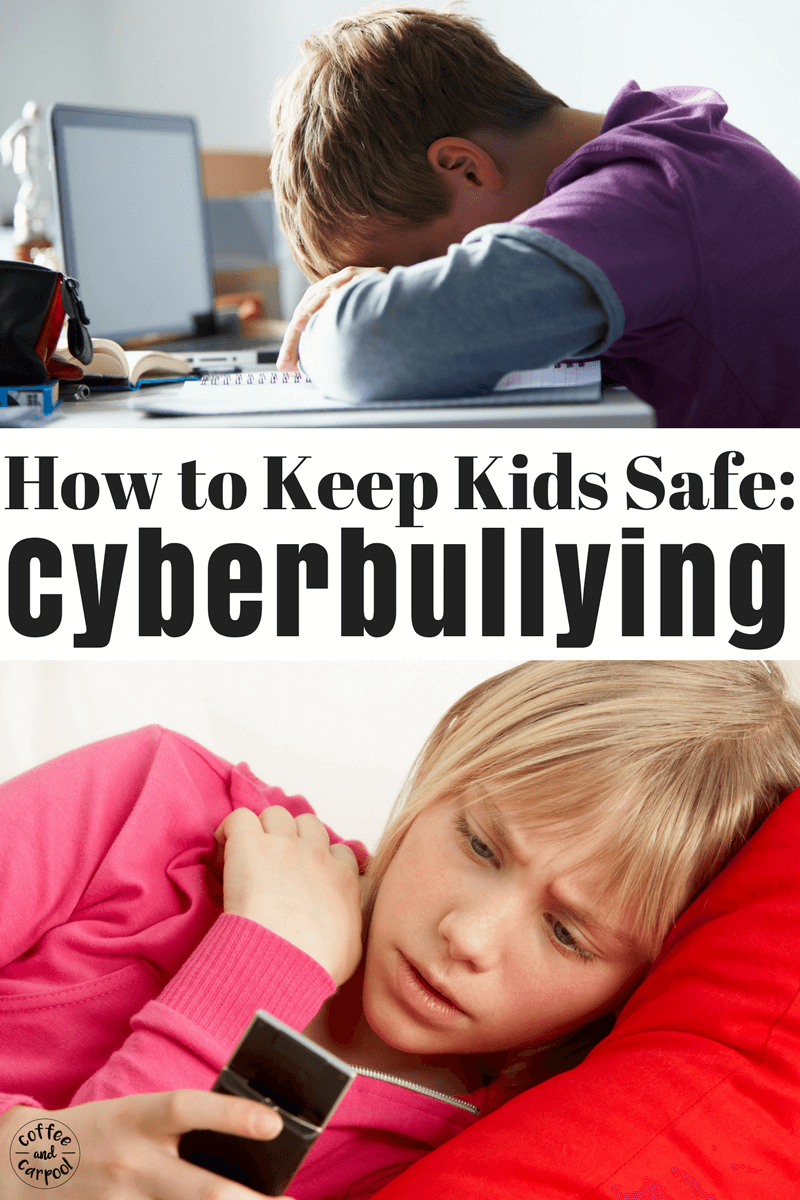Inside: Learn 6 ways to help your child be kind online as you guide them to use the internet in this digital age.
Imagine your child comes home in tears because a rumor about them is being spread.
They’re devastated. And embarrassed. And hurt. And sad. And confused. And mad.
As their parent, you’re feeling all of those things too. And you know there’s not much you can do to ease their pain.
It’s an awful feeling.
Now, since it’s the 21st century, imagine those rumors were spread online in a new social app you’ve never even heard of.
For many kids and parents, that is their reality.
Cyberbullying is alive and well both in tween and teen online social circles and in adult ones.
And having been cyberbullied myself after I went on Good Morning America, it’s a truly gut-wrenching feeling.
When perfect strangers tell you to die and call you every name in the book because they disagree with your message of tolerance and kindness, it’s devastating.
As parents, we can keep our kids emotionally safe from cyberbullying.
And there are things we can do now to ensure our kids act with kindness online so they’re not the ones purposefully or inadvertently causing someone else damage online.
A huge thank you to Chris Drew from The Helpful Professor for sharing with us 6 ways to keep our kids kind while online:

As parents, the internet scares us.
We want to protect our kids from the harms of the online world. There are clearly many harmful, unkind and inappropriate corners of the internet where children can be subject to cyberbullying.
Cyberbullying also has an unfortunate way of following our children home.
Our kids can receive harassing and intimidating online messages from their couch, or worse yet, their own bedrooms.
It is this ever-present threat that makes cyberbullying such a damaging and scary thing for us to confront as parents.
At the same time, we want our children to be kind, confident and capable internet users.
Digital literacy is a necessary skill to have in the 21st Century.
Because our kids will one day need to be skilled at communicating on the internet to qualify for the high paying ‘knowledge economy’ jobs of the future.
So, at some point we need to introduce our children to the internet.
We can work with our kids to guide them on how to use the internet appropriately.
And we can teach them strategies to make the internet a kinder place while protecting themselves from cyberbullying.

Actionable Ways to Help your Children be Kind Online
1. Write Positive Reviews of Places you’ve Been
Writing a positive review shows our children one way of giving back to local businesses that have given you a great experience.
As Nicole often says, kindness is not the same as niceness. Being kind is about doing the right thing without any expectations of a reward.
This is a great opportunity to do just that.
Next time your family goes out for dinner or attends a sporting event, ask your children what they thought of it.
If your children loved the experience, search online for the place or business you just visited.
Click ‘Reviews’ and work with your child on typing a kind, positive review.
This is especially kind for small, local-owned businesses.
2. Post Uplifting Messages with your Child
Before your child starts using social media, model ways to use it that spread kindness in the world.
You could have your child help out with posting images on your own social media accounts.
Give your child the choice about which images, text, and memes to post. Have them do an online image search for positive and uplifting messages to share online.
This is a great teaching opportunity because you will be able to talk with them about why they chose the images they did … and what effect that may have on the people who see the images.
You could also let them “look over your shoulder” during an online conversation and give them the choice of which ‘gif’ or emoji to send back in return.
Guide them on finding a message or image that will spread positivity and happiness on the internet.
Modeling positive practices online will help show your child what you consider to be appropriate ways to use the internet when it’s their turn.

3. Help your Child Start a Blog or Online Diary
Take kindness online by helping your kids keep a blog.
Have you ever considered blogging with your child?
By working with your child on a blog, you’ll be able to guide them through the first steps of sharing their thoughts online.
In the process, make sure to edit the posts with your child and provide suggestions on how to craft messages that are appropriate, affirming of others, and safe to share online.
It could be a blog that reviews books you read together (like this Childtasticbooks blog). Or, you could consider a blog all about kindness such as elementary school student Martha Payne’s NeverSeconds blog. Her blog documented her journey of collecting food for children who are food insecure.
The benefit of this approach is you’re not just teaching your child to be kind online. You’re giving them writing and computer literacy skills that will help them out at school, too.
4. Donate Online Together
Volunteering as a family is a rewarding experience and many families are participating in this year’s Family Volunteer Challenge. It gets children into the habit of thinking about others and giving back to their community.
In January, families went online together to download wish list items to local women and children’s shelters.
In February, families will go online together to send eValentine’s to children in hospitals around the country.
This will give our children a taste of different causes and help them find issues that are close to their hearts.
5. Work Together on an Online Rules List with Kindness at the Heart
As a school teacher, we work on a ‘democratic’ classroom rules list for how we expect each other to behave in the classroom.
But when it comes to online rules, we are often far less explicit.
But we need online rules.
Think about how you would like your kids to use the internet, what sites to go on to, and appropriate amounts of time to spend online.
Things to consider on a kindness-oriented online rules list include:
- The Golden Rule of kindness: treating others the way you’d want to be treated.
- Only sharing positive messages online that lift others up
- Sending personal goodwill messages to friends on birthdays and other celebrations.
- ‘Think before you click’ and ask yourself if you’d say this to someone’s face, then use the THINK method to determine if you should type your thoughts:
Of course, other important online safety rules might be:
- Only chatting online to people you know offline (like school friends).
- Only use the internet for a set period of time per day.
- Only use family-approved websites
Review the rules with your child often.
And as your child gets older, slowly allow them more “freedom” on the internet. In education, we call this guided practice, or the ‘gradual release of responsibility’ approach.
6. Model How to be Kind to Children who are Cyberbullied
Since cyberbullying is becoming more and more prevalent, the odds are very good most children will witness cyberbullying.
Even if our children are not a victim, they’ll see children talking behind each other’s backs or spreading rumors online.

When your child witnesses cyberbullying, they need strategies to address it, because it can be so scary.
If your child tells you their friend is being cyberbullied, suggest they reach out.
Talk to your child and give them suggestions of kind, reassuring messages to the child who was cyberbullied.
(Not sure how to talk to your child about bullying? Download our Bullying Discussion Starters below.)
Remind your child their bullied peer feels hurt and alone right now.
Your child doesn’t have to become best friends with the bullied child. They don’t even have to be friends at all. But they can reach out with empathy and compassion.
Simply including another child and saying kind words can be enough to show the other child that they are welcome and included, both offline and online.
We’re never going to be able to keep our children away from the internet forever. And that shouldn’t be our goal in this digital world.
It’s an increasingly important tool for both work and social interactions that our children will need to learn to use in safe and kind ways.
We’re also never going to be able to fully protect our children from the dark cyberbullying that occurs online.
But as parents and teachers, we can help guide our children to use the internet to their advantage and to create a kinder, better world.
About the Author: Chris Drew is a former elementary school teacher. He now teaches early childhood education at universities. He blogs about education, play-based learning and educational technology at his blog The Helpful Professor.








Leave a Reply